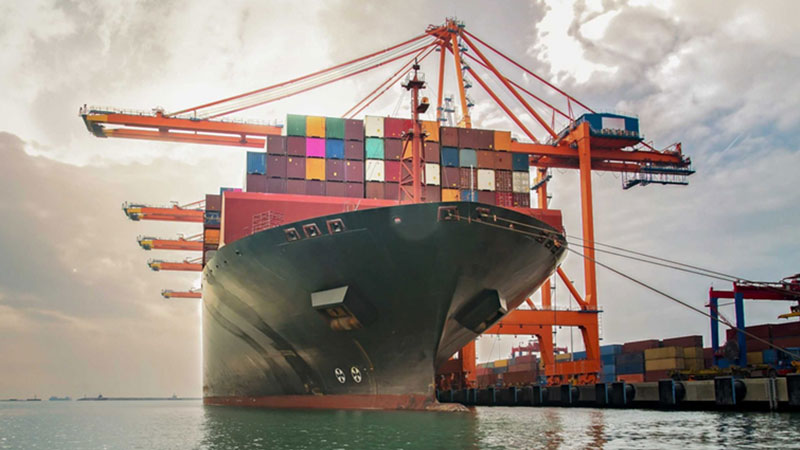Data is complicated — sometimes it’s confusing, sometimes it’s a lifesaver. In the world of marketing, it’s a must, and savvy digital marketers are already well-versed in using tools like Google Analytics, Adwords, and other social media analytics to support marketing campaigns.
But what about the supply chain? Today, brands that rely on past performance and gut instinct rather than on robust data and predictive analytics are making a big mistake.
For e-commerce companies, supply chains are national or even global, extremely dynamic, and increasingly complex. Suppliers and customers are most often located in other regions and many factors influence the global supply chain today: weather (including the extremes of climate change), politics (think Brexit and tariff wars), sudden fads and more.
Given the complexity, there’s no way to manage the e-commerce supply chain effectively without data-driven strategies. The good news is that it’s never too late to implement data in the supply chain to boost the performance of e-commerce brands.
What are Supply Chain Strategies?
A supply chain is a process of creating a product and getting it to the customers who want it when they want it. An effective supply chain strategy goes beyond getting a product from origin to destination and also looks at the product lifecycle, predictability of demand, inventory management, delivery, and service level (a metric that captures the ability to satisfy demand or responsiveness).
All these aspects of the e-commerce supply chain can be optimized using data-based supply chain strategies and smart analytics to help build and grow the business.
How Data-Driven Supply Chain Strategies Can Make Ecommerce Brands More Competitive
Predict and prevent problems
In today’s fast-paced world, challenges and complications need to be anticipated and prevented before they happen, which is why predictive data platforms have become ubiquitous in all areas of life. For example, apps like Google Maps or Waze help people avoid traffic jams, road work, and other hazards coming up by showing them the real-time dynamic status of the roads.
A data-driven supply chain strategy should also be based on prediction and prevention rather than analysis afterwards. Make sure to choose a platform that provides data in real time and uses advanced analytics to predict problems before they occur.
Be precise and flexible
Predictive analytics are more precise than analysis based on past behaviour. Think about the navigation apps above. Even if users know how long the drive usually takes, predictive navigation apps help them make the right decisions for a specific journey at a specific time, depending on what’s happening on the ground right now. The same is true when planning an e-commerce supply chain.
While experience shows that it takes three days on average to ship a product from point A to point B, it can’t provide a specific time prediction for a particular shipment based on time-sensitive factors like current traffic and weather conditions.
A data-driven strategy allows e-commerce brands to accurately predict the arrival time of every product shipment and to respond with flexible solutions. It also helps resize static and move inventory across the supply chain frequently and accurately so that consumer needs can be met without stockpiling.
Maintain an agile inventory
Inventory is one of the biggest challenges in e-commerce. If brands can’t provide the consumer with what they want ASAP, they’ll go to another seller that can. Therefore, e-commerce retailers can build up a buffer of inventory to guard against running out of products. The problem with big inventories is that they’re extremely expensive. The annual State of Logistics Report valued the total business inventory at $22.5 billion last year. In the case of perishable items, overstocking can mean losing the merchandise altogether.
The only way for e-commerce retailers to minimize their inventory without hurting sales and service or losing merchandise is to be agile enough to respond to supply chain issues before they happen.
Rigid operations won’t cut it — there needs to be flexibility and agility throughout the supply chain to stay competitive, including production, logistics, marketing, and supply.
The proof of this is already out there: McKinsey & Company assessed 10 supply chain capabilities in 250 companies, plotting them on a scale of one to five for agility scores. The research found that companies with more agile supply chain strategies enjoy service levels seven percentage points higher and inventory levels that were 23 days lower than their less agile peers. Similarly, research in Next Generation Supply Chains by PwC found companies rated as supply chain leaders averaged 15.3 inventory turns per year, while less-agile companies achieved only 3.8 turns.
Supply Chain Strategies Open up new opportunities
It’s not all about prevention — data-driven strategy can also open up windows of opportunity in brands’ e-commerce supply chains.
Let’s look at a situation where extreme weather is forecasted in a certain area. Data-driven supply chain systems will provide real-time alerts about expected weather conditions so suppliers can avoid routes that could be affected. But data can do more — it can assess what products are likely to be in demand as a result of the weather. What are people likely to buy before a blizzard? Extra heaters? Warm clothes? Tire chains? Board games? Ecommerce brands can make sure to stock up on items relevant to affected areas. Then they can invest in a marketing campaign for those items, building brand recognition, and loyalty.
The e-commerce world is complex, dynamic, and competitive. Weather, politics, and consumer trends can and will have significant effects on the e-commerce supply chain. Data-driven supply chain strategies based on smart analytics can help navigate those challenges. By becoming agile and responsive to customer needs, ecommerce brands can not only predict and prevent problems but even turn them into business opportunities.
More articles for your ecommerce success here.





